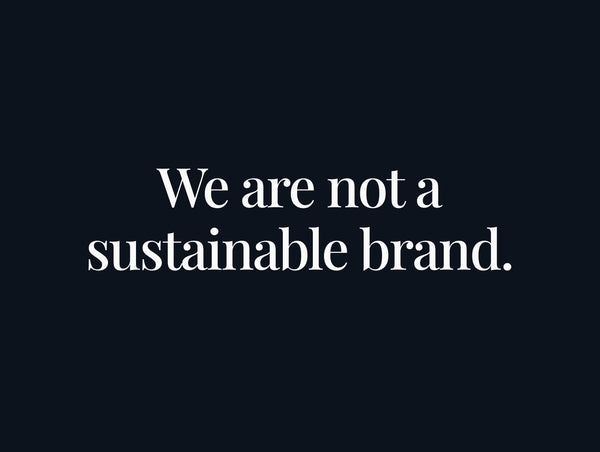
In our ongoing series detailing the 4 areas of concern for the world’s oceans in our lookbook, and the 1% for the Planet partners we’re supporting in an effort to address them, today we’re taking a closer look at the topic Tide-Turning Toxic Beaches
Mote Marine Lab is one of very few independent, nonprofit laboratories dedicated exclusively to marine research. Originally focused on sharks, the lab has grown to a staff of over 200, and addresses a broad spectrum of ocean issues worldwide. One of these is specifically focused on red tide: The Florida Red Tide Mitigation and Technology Development Initiative.
The initiative seeks to reduce occurrences of red tide and manage its impact by developing better detection systems, and using technology to empower citizen scientists to help in the effort. We spoke with Stephannie Kettle to learn a little more about Mote itself, as well as Florida Red Tide, a phenomenon that is poisoning beaches and coastal areas with increasing frequency.

Could you give us a little background on Mote’s history?
Mote was founded as the Cape Haze Marine Laboratory in a tiny shed in Placida, FL in 1955 by Dr. Eugenie Clark for her groundbreaking shark research. After outgrowing its original space and moving to Siesta Key, the Lab was renamed in 1967 for its principal benefactor, William R. Mote. The Lab moved to its present location on City Island in Sarasota in 1978, and opened Mote Aquarium in 1980 to showcase its research to residents and tourists alike.
What is the primary mission of Mote?
We’re an independent, nonprofit marine research institution comprised of world-class marine scientists committed to the belief that the conservation and sustainable use of our oceans begins with research and education, and that both are crucial to helping create a better environment for ourselves and our children.
What is Florida Red Tide?
A red tide, or harmful algal bloom, is a higher-than-normal concentration of a microscopic plant-like organism that can release strong toxins. Along Florida’s west coast and elsewhere in the Gulf of Mexico, the species of algae that causes red tides is Karenia brevis, often abbreviated as K. brevis. “Florida Red Tide” refers to blooms of this specific organism.
What causes a Florida Red Tide?
It’s a combination of factors. Biologically, K. brevis must be present in the water and able to out-compete other phytoplankton. Chemically, the appropriate temperature, salinity, and nutrients the alga needs to grow and multiply must exist simultaneously. Physical conditions concentrate and transport K. brevis, and ecological conditions (like the presence or absence of other life forms) determine whether or not it will thrive.




Why are red tides harmful?
Many red tides produce toxic chemicals that can affect both marine organisms and humans. Florida Red Tide produces brevetoxins that can fatally damage the central nervous systems of fish and other vertebrates. They can also accumulate in molluscan filter-feeders, such as oysters and clams, which can lead to neurotoxic shellfish poisoning (which is why there are shellfish bans during red tides).
Additionally, wave action can break open K. brevis cells and release these toxins into the air, leading to respiratory irritation, or more serious illnesses among those who have conditions like asthma or emphysema. So red tides can even cause harm on land.
Can red tides be eradicated?
Currently there is no tried-and-true way to completely remove Florida Red Tide from the Gulf without potentially causing serious damage. Because the harmful effects are caused by toxins released when K. brevis dies, potential controls must both kill the organism and eliminate the toxins from the water without doing further harm to the ecosystem. There’s also the issue of practicality: red tides vary greatly in size–sometimes expanding as far as 10,000 square miles–and can be present from the surface of the water to the seafloor, making them difficult to target.
Over decades, scientists (including Mote scientists) have worked to rule out ineffective control and mitigation strategies and redirect attention toward more promising ones.


What is something non-scientists can do to help?
In general we can each do our part to help keep our waterways clean. We know that there is the potential for coastal nutrients to influence blooms, in particular from fertilizers that reach the ocean via storm runoffs. Fertilizer and other kinds of pollution flowing into our coastal ecosystems are generally bad and should be reduced.
Stormwater runoff is one area where people's choices can have an impact. We encourage coastal residents to choose yard plants that require less fertilizer, minimize fertilizer use overall, and use slow-release varieties if they can’t avoid it.
What hurdles does Mote face on a daily basis?
Good science and research take time. Often, a specific event or catastrophe will create a public outcry that encourages new projects and financial support. But then time passes, and the original enthusiasm is out of sight, and out of mind.
For example, Mote is part of the C-IMAGE consortium, which continues to study the effects of the BP Deepwater Horizon spill. Although that event occurred 10 years ago, it’ll be many more years before we fully understand its effects on the environment, long after public attention has receded.
Similarly, funding to study Florida Red Tide often peaks after a bad bloom, but then fades away. These kind of ups-and-downs hurt science, since consistent funding is needed for any long-term study.
Learn more about Mote Marine Lab: https://mote.org














